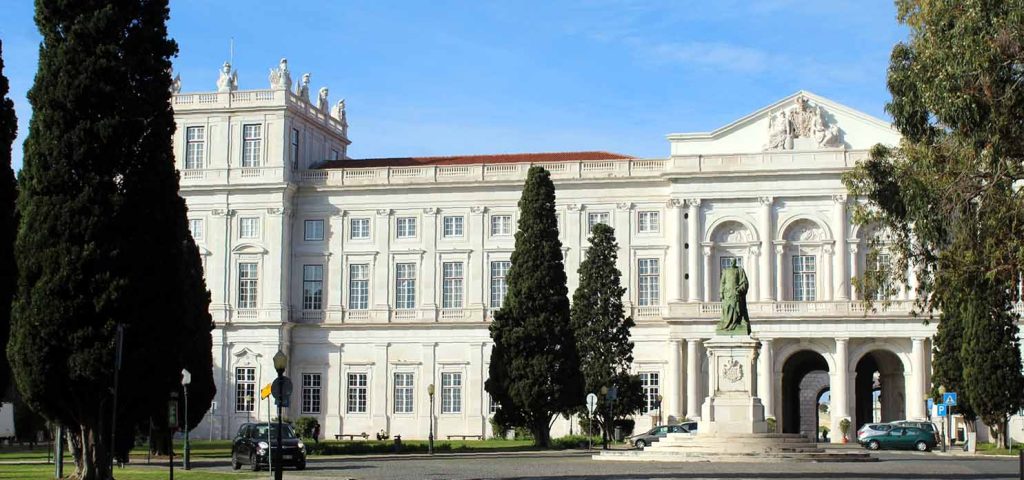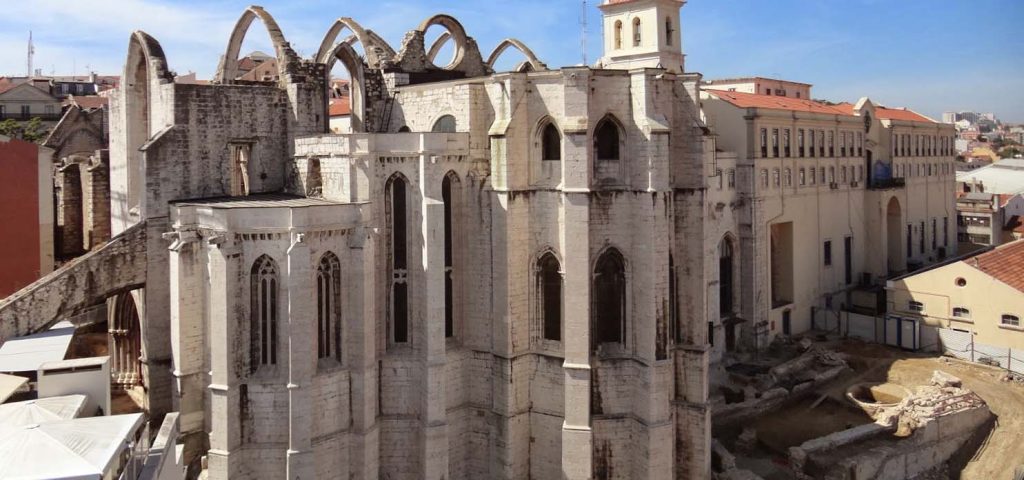When you think of Lisbon, the capital of Portugal, images of the romantic Tram 28, the golden glow of São Jorge Castle, or the aroma of grilled codfish wafting through the alleys of the old town probably come to mind. As one of Europe’s oldest cities, Lisbon is a tapestry of Moorish, Roman, and Christian cultures. Its history isn’t confined to museums—it lingers in the overlooked corners and side streets.
If you’ve already wandered through the bustling Praça do Comércio or climbed the tower of the Jerónimos Monastery, it’s time to go deeper. From the iconic Belém Tower to a shadowy lane near Rua dos Bacalhoeiros, follow us through five hidden historical corners—places without tourist lines, yet full of the city’s most authentic stories.
1. The Defensive Twin Behind Belém Tower: Fort of São Lourenço do Bugio
“You’ve heard of Belém Tower as part of Lisbon’s maritime defense—but do you know where its twin stands?”
Belém Tower is an essential stop for every visitor to Lisbon. Its ornate Manueline architecture and picturesque riverfront location make it one of the most photographed spots in the city. But if you shift your gaze from land to the west side of the Tagus River mouth, you’ll spot another largely forgotten fortification—Fort of São Lourenço, more commonly known as Bugio Lighthouse. Built in the 17th century in a unique circular design inspired by Renaissance fortresses, this solitary sentinel rises from the middle of the water like a stone crown. It once played a key role in Lisbon’s strategic sea defense system, forming an invisible line of protection in tandem with Belém Tower to ward off pirates and enemy fleets approaching the capital.
Today, it functions as a fully automated lighthouse, no longer manned by soldiers but still preserving traces of its military heritage, including gun slits and aged stone walls weathered by centuries of salt and wind. While stepping foot on the fort requires special arrangements, you can admire its silhouette up close during a Tagus River sailing tour—especially stunning during golden hour when the sun melts into the Atlantic horizon. For history enthusiasts and photographers alike, this hidden twin offers a glimpse into the quieter but equally vital chapters of Portugal’s Age of Discovery.
Tips:
• Join a Tagus River cruise—some tours include a Bugio photo stop and historical commentary.
• Bring binoculars or a telephoto lens to capture architectural details from afar.
• Evening cruises often provide the most dramatic lighting for photos.
2. Underground Secrets of Royalty: Hidden Tunnels Beneath the Ajuda National Palace
“Beneath the opulence lies an escape route—and perhaps a prison.”
The Ajuda National Palace stands proudly on a hill in western Lisbon, overlooking the city like a grand time capsule. It was the last official residence of the Portuguese royal family and today serves as both a museum and a symbol of royal grandeur. Its lavishly decorated salons, gleaming chandeliers, and opulent tapestries tell stories of imperial banquets and royal ceremonies. But what few visitors know is that beneath these luxurious floors lies a secret underworld—a network of underground tunnels carved out in the 19th century to provide the monarchy with discreet escape routes during moments of unrest, such as fires, coups, or revolutions.
Some parts of these subterranean corridors were also rumored to function as holding cells for political dissidents during times of instability. Though most of the tunnel system remains closed to the general public due to safety and preservation concerns, private guided tours—often arranged through historical societies or with palace staff—can grant limited access. Equipped with flashlights and hard hats, visitors venture into these narrow, dimly lit stone passages, experiencing the tension and mystery of an era where secrecy often meant survival. It’s an immersive way to connect with Lisbon’s royal past beyond the surface-level splendor.

Tips:
• Book a private group tour well in advance—spots are limited and guides are often experts in royal history.
• Wear comfortable shoes and light clothing, and avoid bringing large bags.
• If you’re claustrophobic, let your guide know in advance—some passages can be tight and low-ceilinged.
3. Islamic Legacy Beneath the Market: Moorish Wells Near Martim Moniz
“In medieval Muslim Lisbon, control of water meant control of power.”
Tucked away beneath the bustling Martim Moniz Square, lies the hidden legacy of the Moors in Lisbon—an intricate underground well system known as the Moorish Wells. These wells were pivotal during the 12th century, constructed to tap into underground water sources that were essential for sustaining both daily life and military strength. Water was not only a necessity for survival but also a symbol of power in the medieval Muslim world, and these wells represented control over a vital resource.
While many of these wells are buried under modern buildings, a few have resurfaced unexpectedly in places like restaurants and cafés, offering a fascinating glimpse into Lisbon’s Islamic past. A remarkable example can be found in the basement of “Casa do Alentejo,” a traditional Portuguese restaurant, where an ancient, intact well is preserved and open to curious visitors. The well stands as a testament to the engineering skills of the Moors and their strategic importance in the city.
Tips:
• Staff at “Casa do Alentejo” are usually happy to provide detailed information about the well’s history—it’s best to visit during off-peak hours for a quieter experience.
• For a deeper dive into Lisbon’s Islamic heritage, consider joining a local walking tour, such as the “Muslim Lisbon” heritage route, which takes you to other hidden sites that often go unnoticed by most tourists.
4. Echoes in the Ruins: Night Visits to the Carmo Convent
“The earthquake shattered its dome—but left behind the voice of history.”
The 1755 earthquake that struck Lisbon is one of the most catastrophic events in the city’s history, leaving widespread devastation in its wake. The Carmo Convent, a gothic masterpiece dating back to the 14th century, was not spared. The powerful tremors caused the convent’s once-impressive roof to collapse, leaving the skeletal remains of its arches as a poignant reminder of the disaster. Today, the Carmo Convent stands as a powerful symbol of both the fragility and resilience of Lisbon’s architectural history.
While the convent serves as a popular museum during the day, offering an impressive collection of archaeological artifacts and insights into the city’s history, its true haunting beauty is revealed at night. The special “Under the Moonlight” events, which take place after dark, offer a rare opportunity to experience the convent’s ruins in a more intimate, atmospheric setting. Only a select number of visitors are allowed in at a time, and they are guided through the skeletal remains by torchlight. The atmosphere is charged with the echoes of history, with the haunting silence of the broken arches and the whispers of the past filling the air. You can almost hear the monks chanting in the distance or feel the tremors that shook the city centuries ago.

Tips:
• Be sure to book your tickets for the “Noite no Carmo” event well in advance, as spots fill up quickly due to the limited capacity.
• To fully immerse yourself in the experience, consider bringing a pair of headphones with soft, ambient music or nature sounds to enhance the sensory atmosphere of the ruins as you wander through the convent under the moonlight. It’s a chance to connect with the space in a way that’s far more than just a visit—it’s a journey through time.
5. Witchcraft and Thieves in the Alley of Figs: A Hidden Lane off Rua dos Bacalhoeiros
“In this forgotten alley, women poisoned, and children vanished—or so the stories say.”
The Alley of Figs isn’t an official street name but a nickname locals use for a narrow lane branching off the western side of Rua dos Bacalhoeiros. In the 15th century, this area was a hub for lower-class residents and sailors—and the birthplace of many dark legends, including tales of witchcraft and vanished children.
Today, the alley is quiet and shadowy, lined with old azulejo tiles and traces of a bygone fishing life. Walking through it feels like stepping into the late-medieval port of Lisbon. Around dusk, with fading light and cats slipping through the alley, you may feel the secrets of centuries rustling in the air.
Tips:
• The alley is narrow—visit during daylight and preferably with company.
• Pair this stop with a visit to the nearby “Casa do Bacalhau” museum to learn about Lisbon’s cod fishing history.
History Isn’t Just in Museums—It’s Whispering from the City’s Corners
Lisbon is a city layered with time, like an onion peeled back with every step. The grand squares and polished museums are worth seeing, but what truly moves the soul are these quieter, hidden corners. They’re not in guidebooks or postcards, but they hold the city’s most honest memories and voices.
Next time you visit Lisbon, slow down. Be curious. Wander off the path. Because beyond Belém Tower’s reflection, there lies an entire book of untold urban stories—just waiting to be opened.